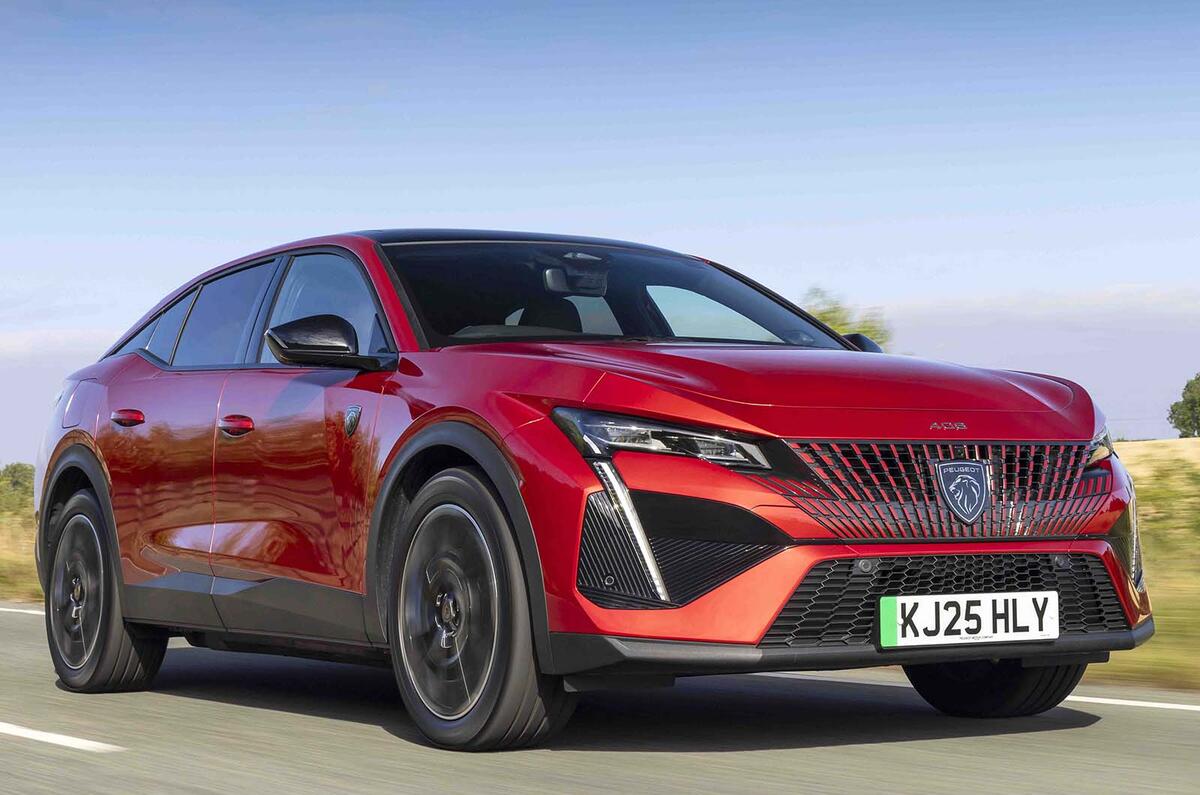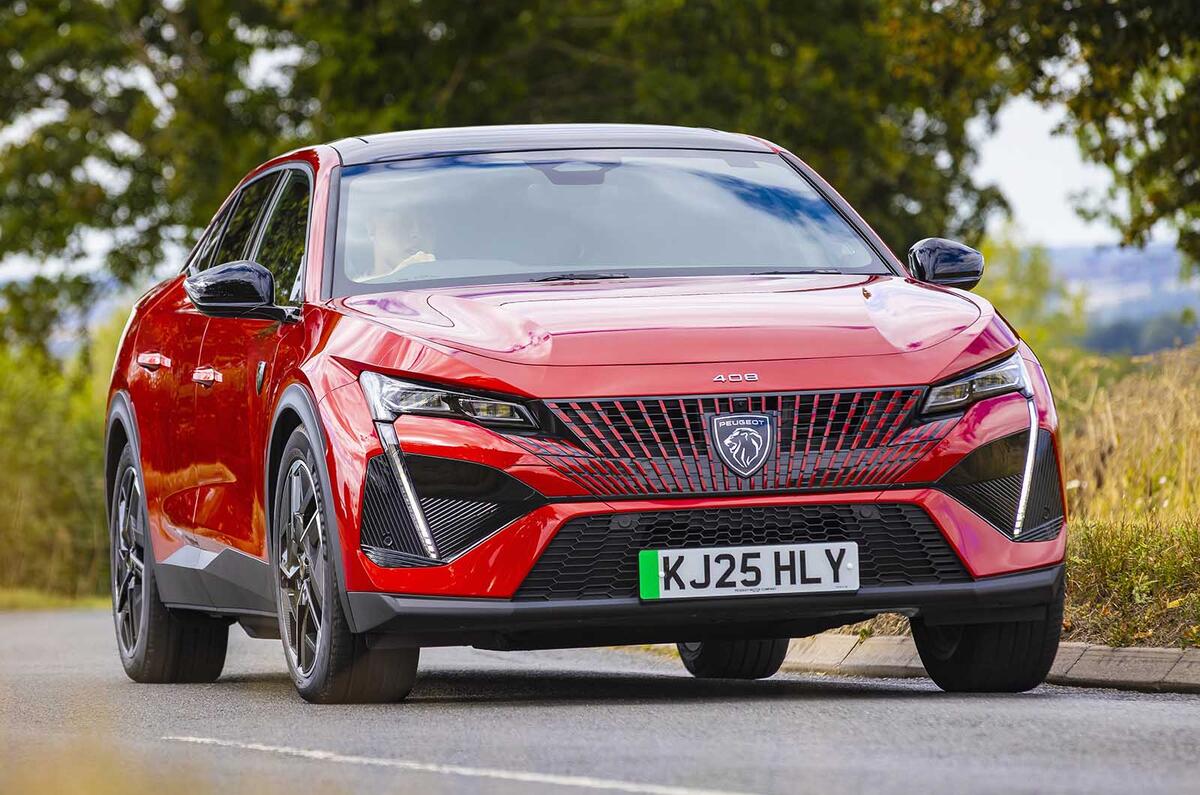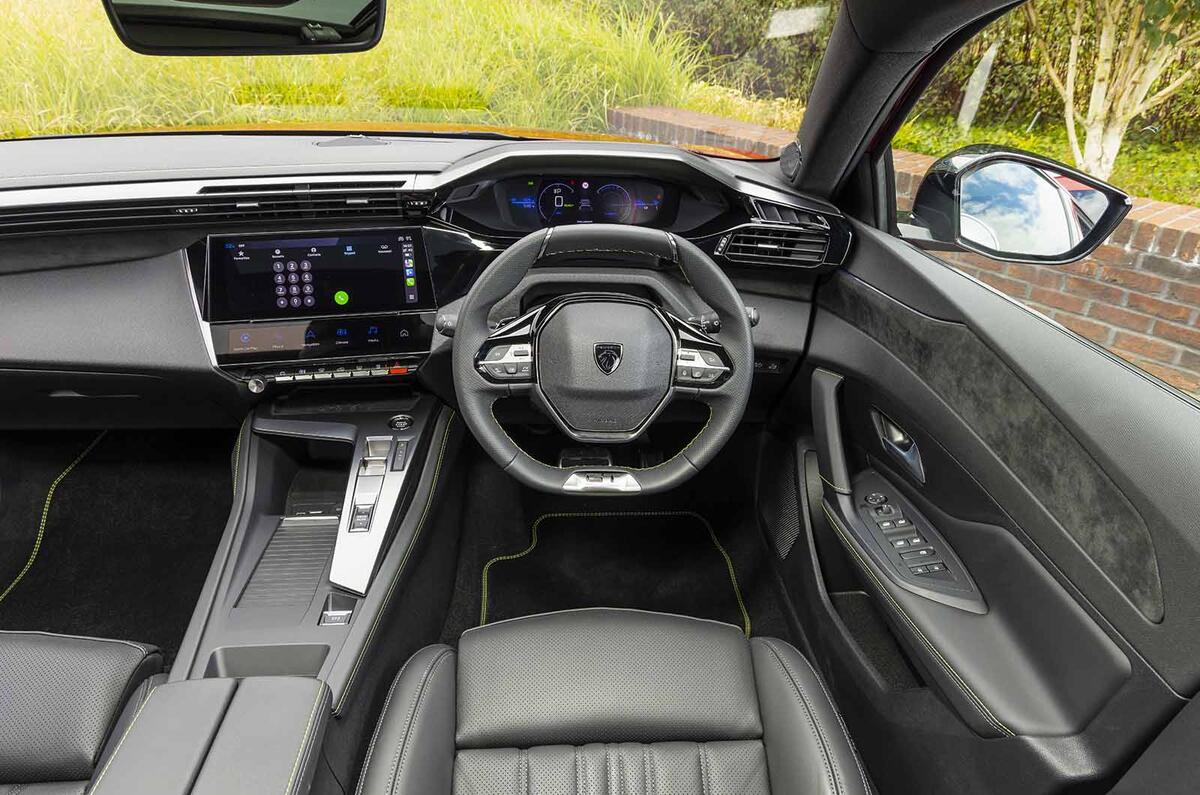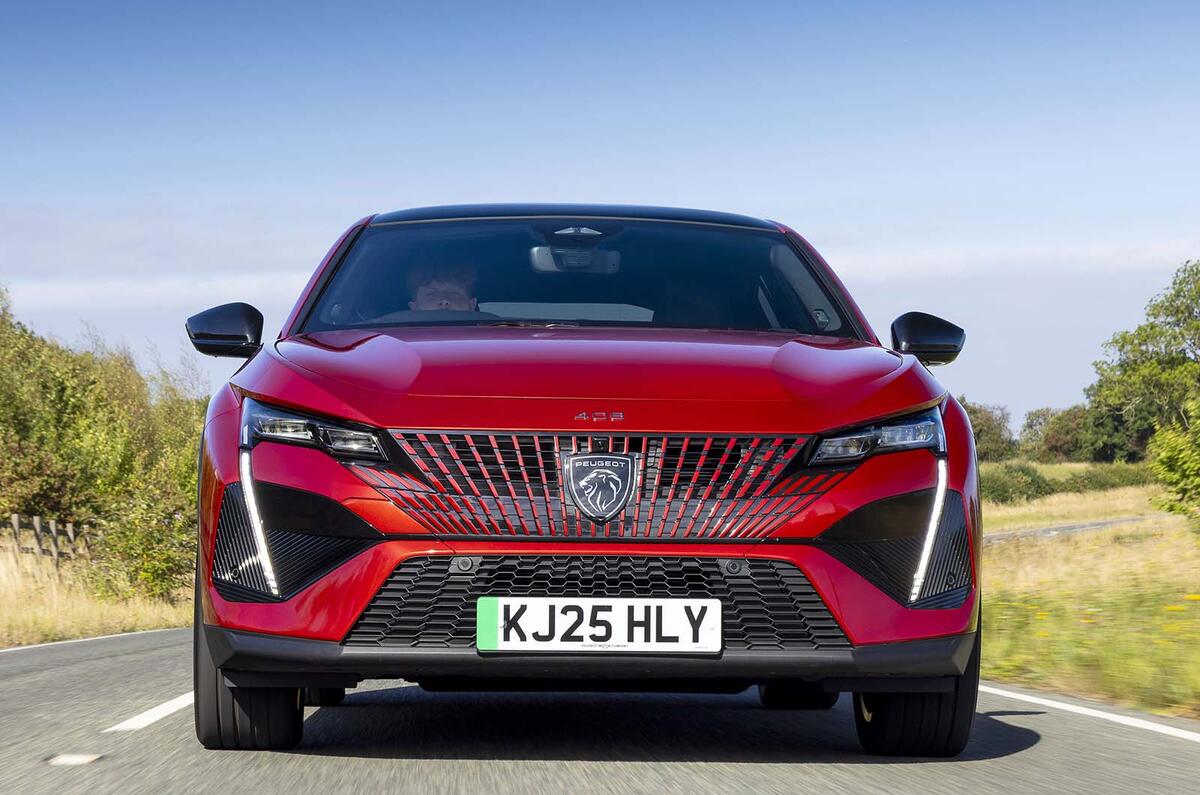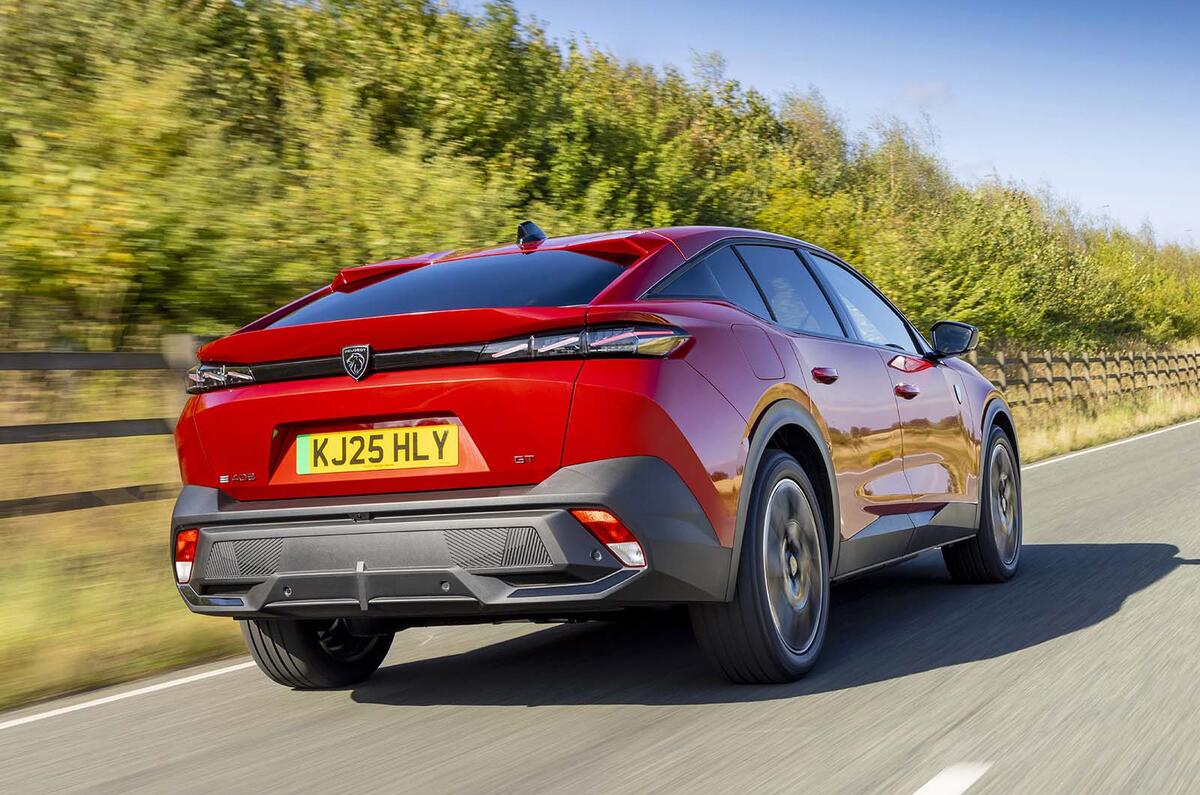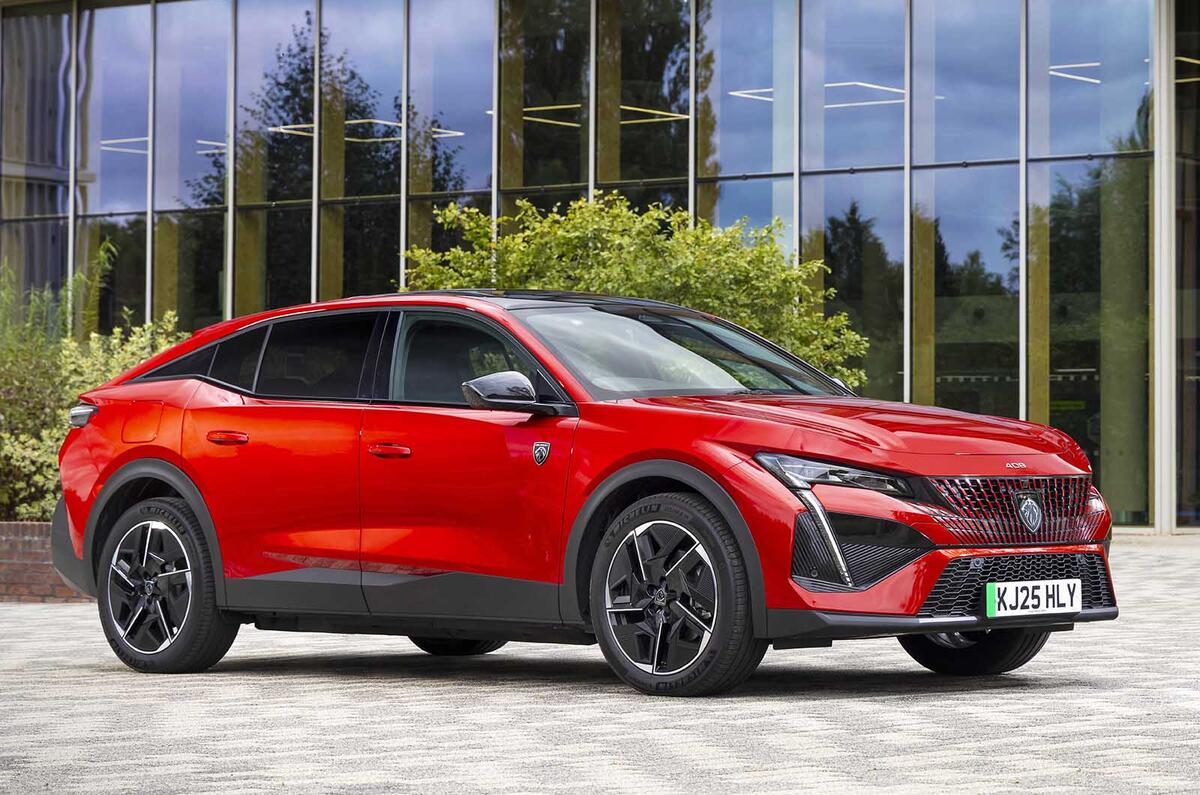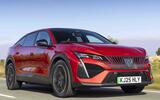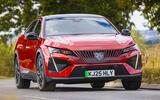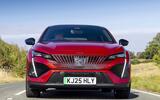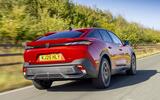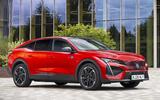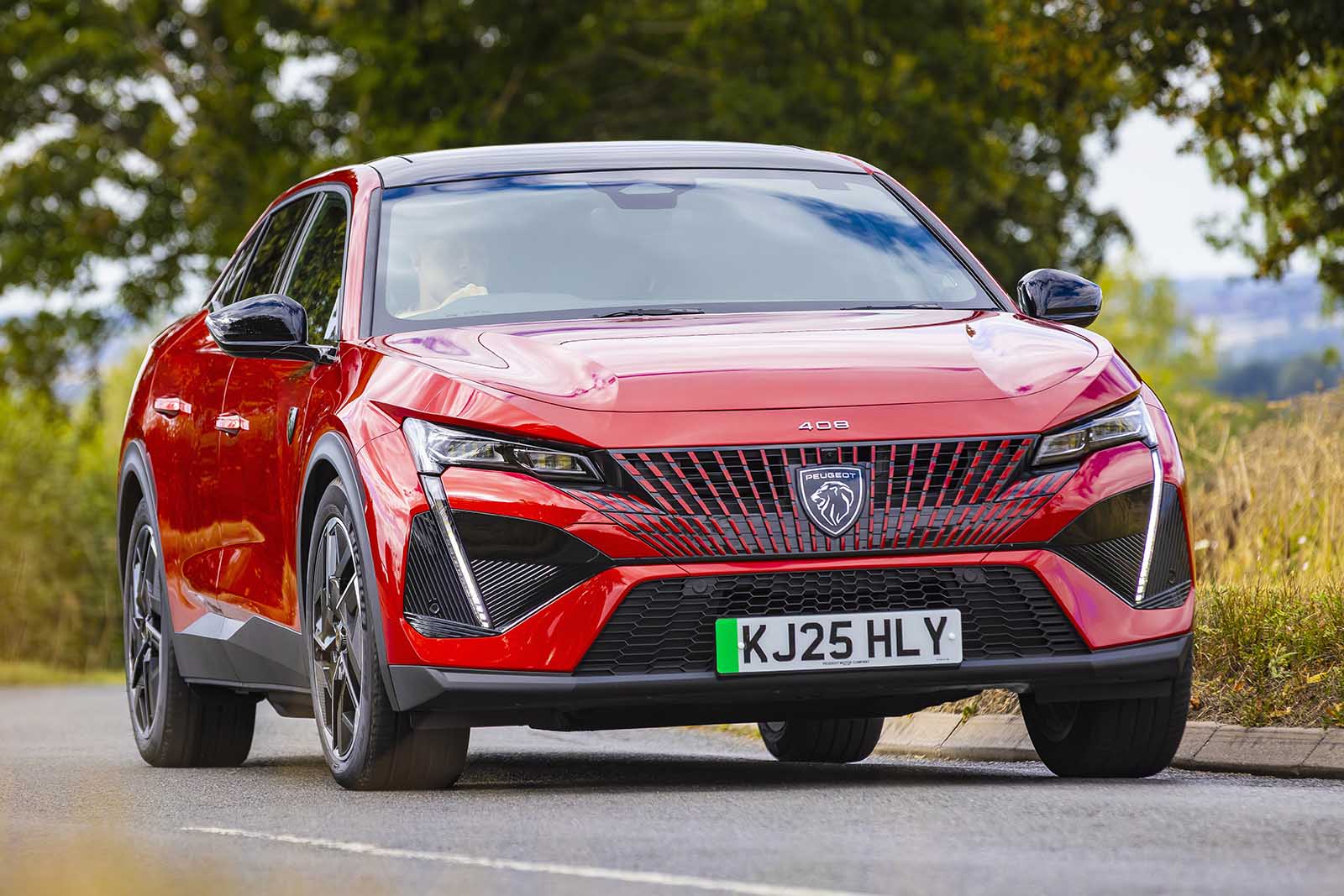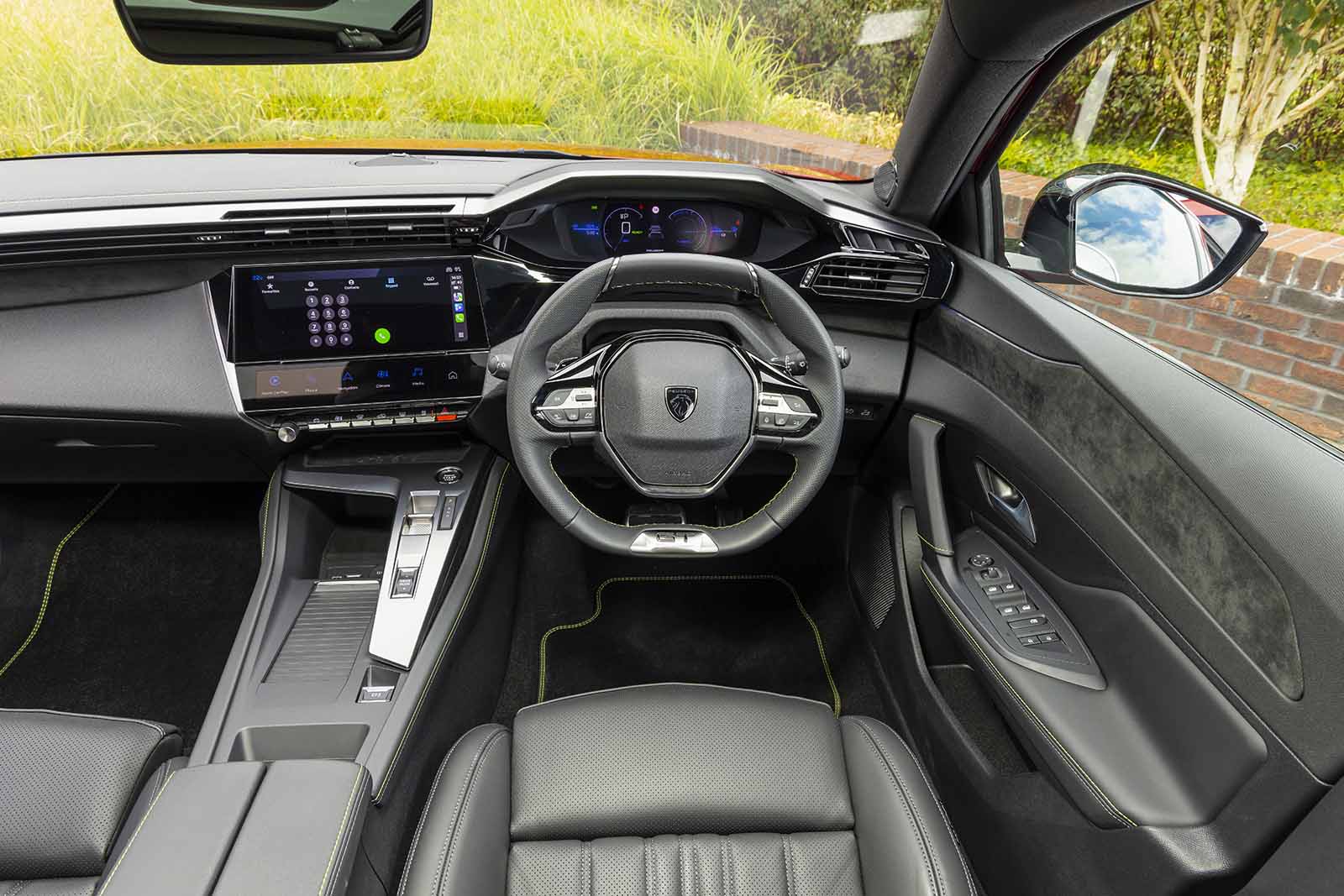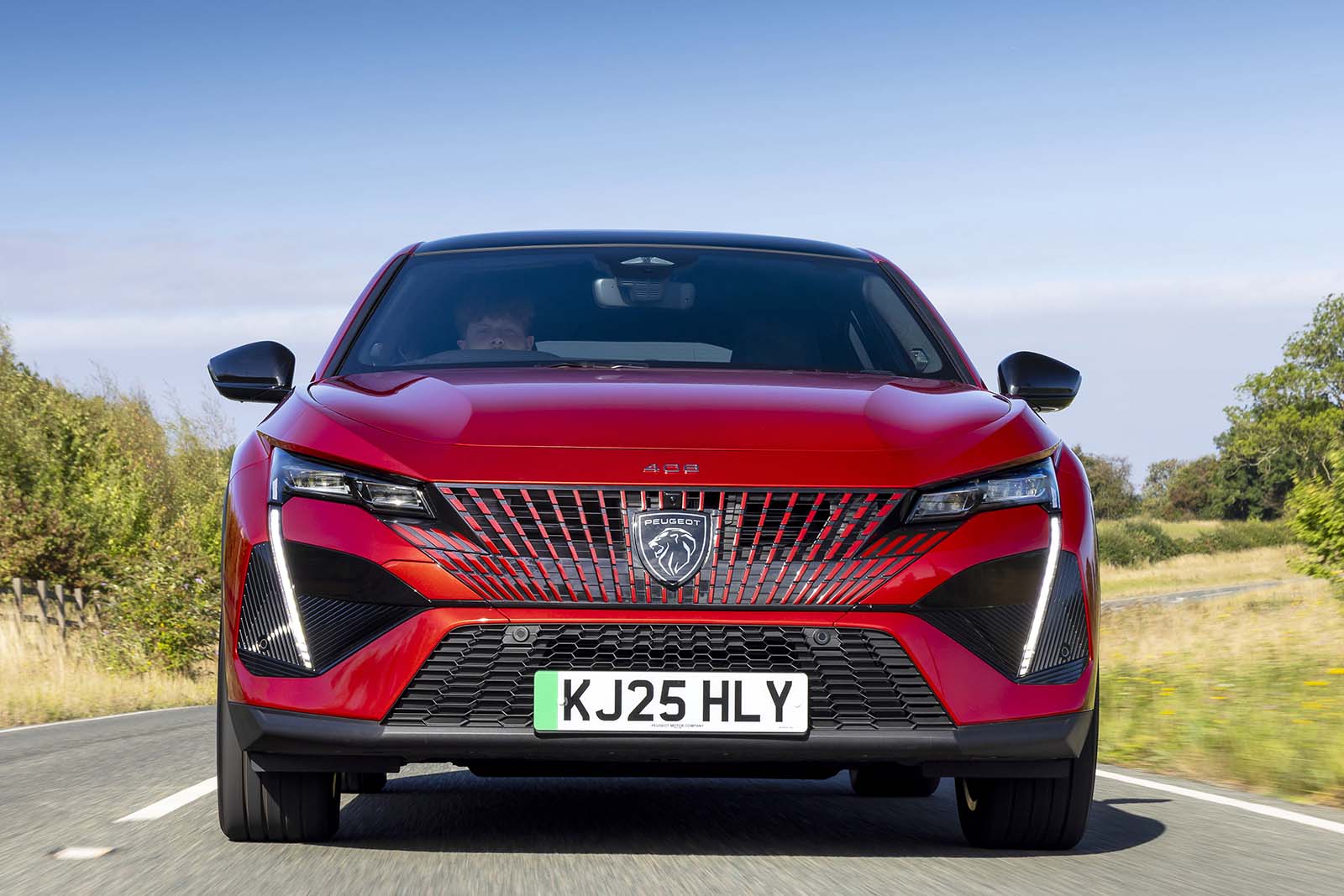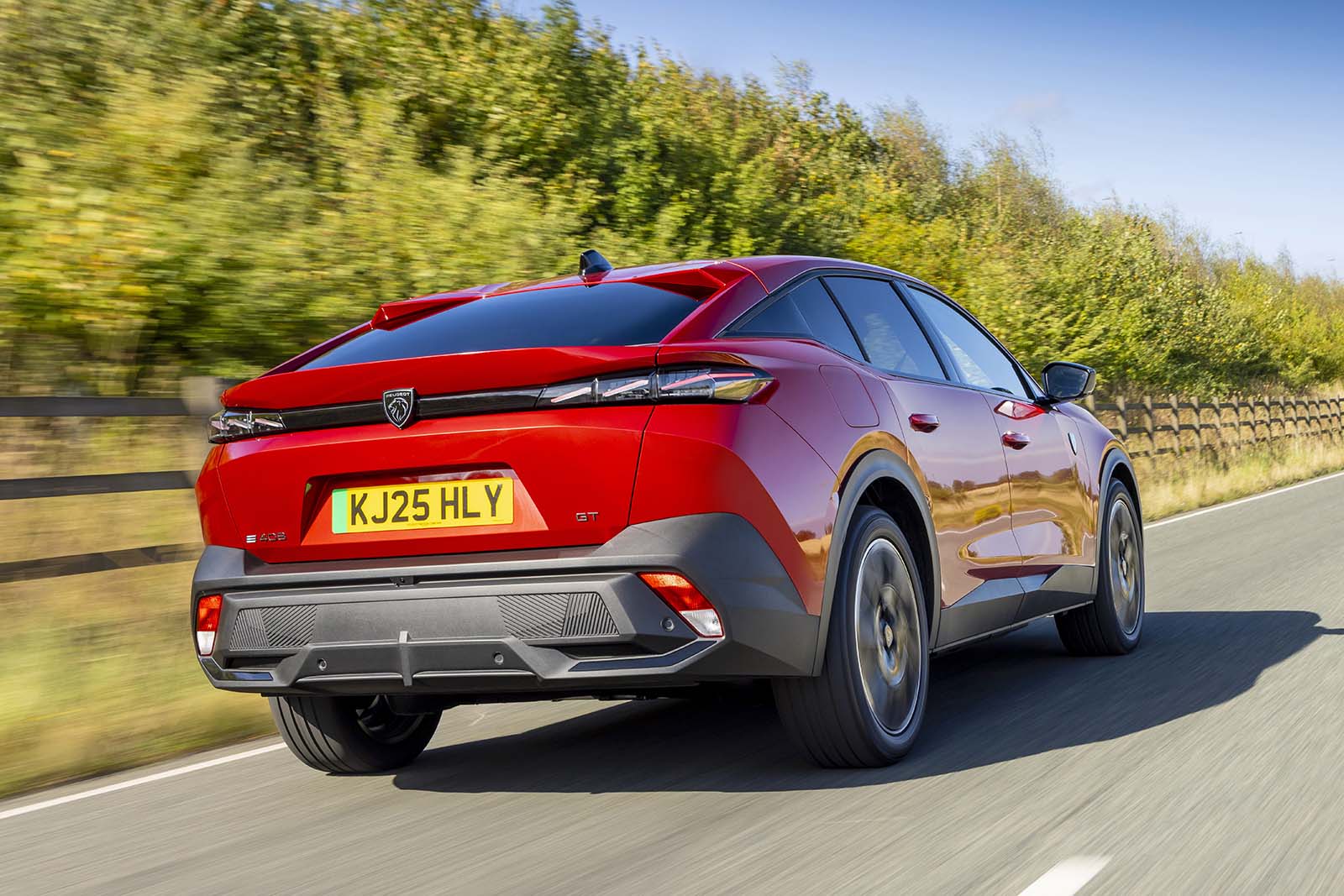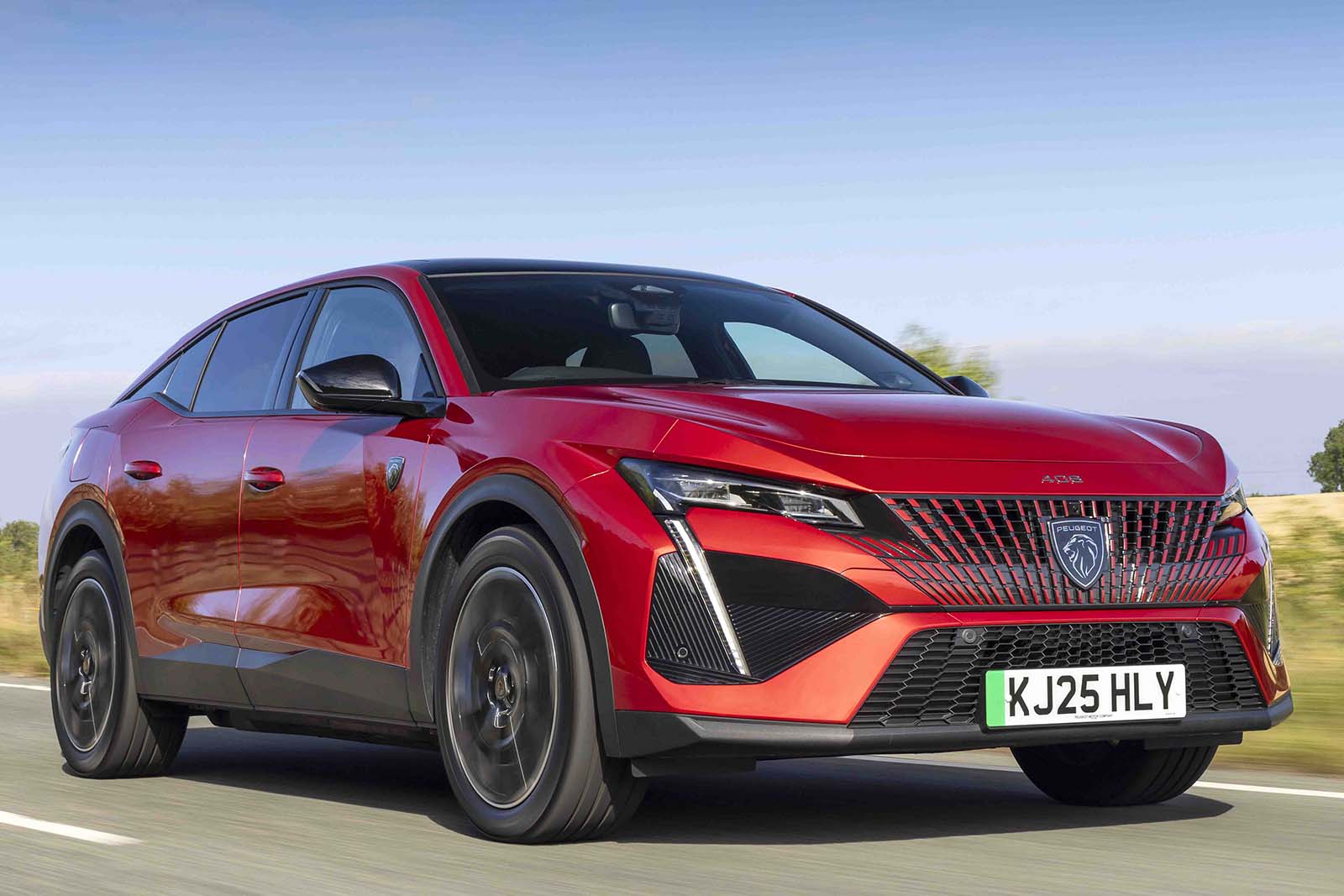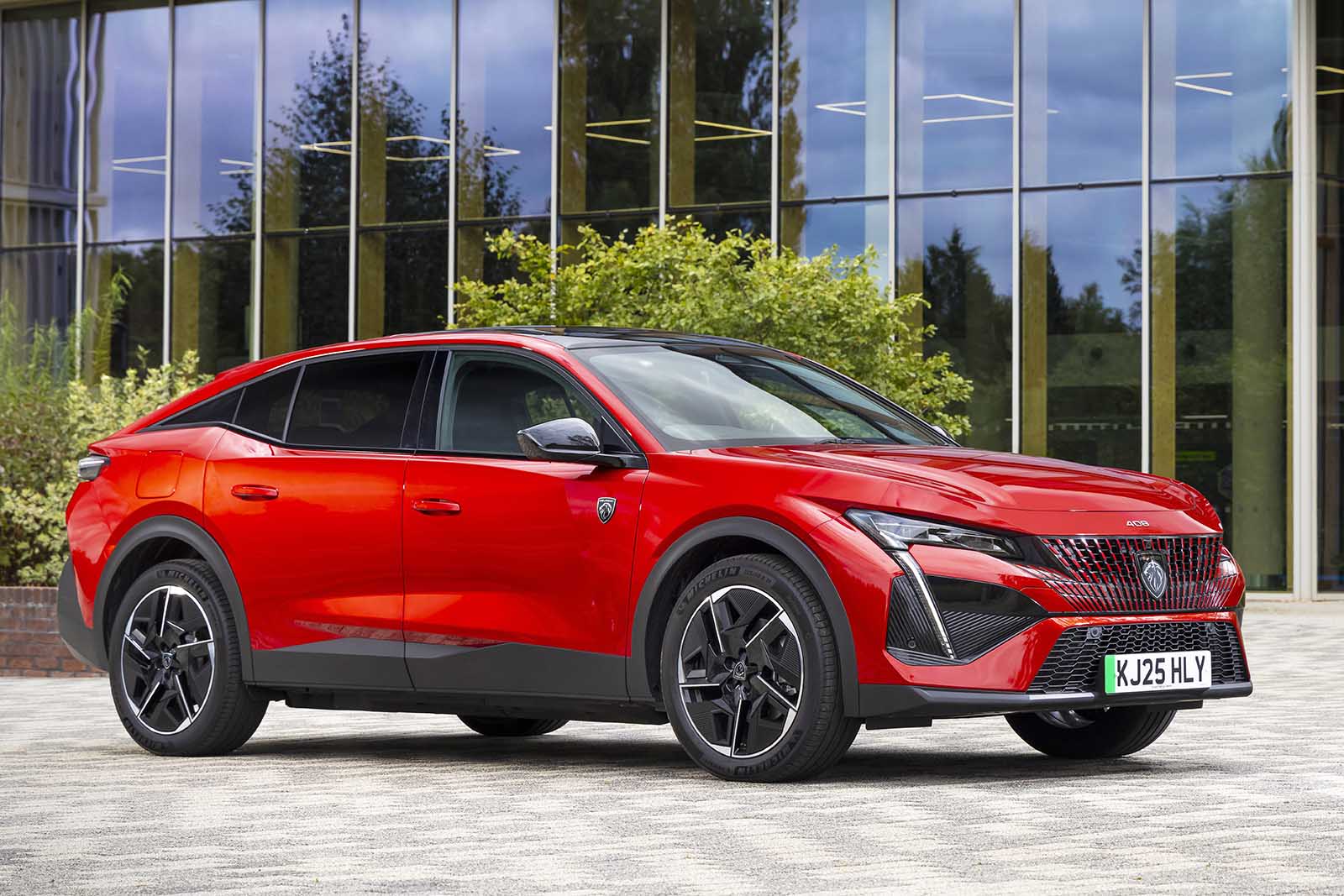Like the exterior, the interior of the e-408 is taken straight from the ICE 408, which is actually pretty similar to the dashboard in the 308 and e-308. It’s mostly good news: a pleasing design, a well-screwed-together feeling and satisfyingly damped switchgear. However, as you go up the model range (our GT test car was £43,655 with options), there’s a little too much hard, plain-looking plastic to justify the price.
The heated, massaging leather seats (a £1400 option) look and feel lovely but, despite being given a seal of approval from the German association of back health, I felt they could give more lateral support. Allowing the seats to lower farther would also help back up the sporty looks, and it’s worth noting that Allure cars (the lower of the two trims) do without a tilting cushion.
Infotainment and ADAS can be the biggest bugbears with new cars, but for the most part the e-408 impresses. The main touchscreen is clear and easy to use, with a good mix of buttons for almost all of the main controls, except for temperature and heated seats and steering wheel.
A row of touch-sensitive i-Toggles below the infotainment are supposed to be customisable but frustratingly don’t allow you to change the temperature up and down.
At least the bezel is ergonomically shaped to steady your hand. If you choose to adjust the climate settings by voice control, it will unhelpfully stenograph your words across the entire display, blocking your view of the sat-nav for longer than needed.
At 5ft 10in, I managed to get comfortable with Peugeot's Marmite i-Cockpit layout, but some drivers may find they have to adjust their normal driving position to be able to see over the steering wheel to the 3D-effect digital dials, especially if they are shorter or like the steering wheel up high.
With the push of a toggle, all of the ADAS functions are brought up, allowing you to easily turn them off. Even when left on they proved to be less agitating than in some rivals.
Adaptive cruise control is standard on both trims, and it generally works well, apart from behaving erratically when changing lanes. Frustratingly, though, it removes the option of being able to use ‘normal’ cruise control.
In terms of practicality, there's good in-car storage throughout and a long but shallow 471-litre boot (plus a little underfloor space). Annoyingly, the design of the tailgate gutter means that accessing the boot after heavy rain results in a cascade of water onto your feet.
There are Skoda Octavia levels of rear leg room but a distinct lack of under-thigh support, and the seat bases are set at a steep angle, which proves uncomfortable for some. Head room is limited and will be tight for six-footers.


